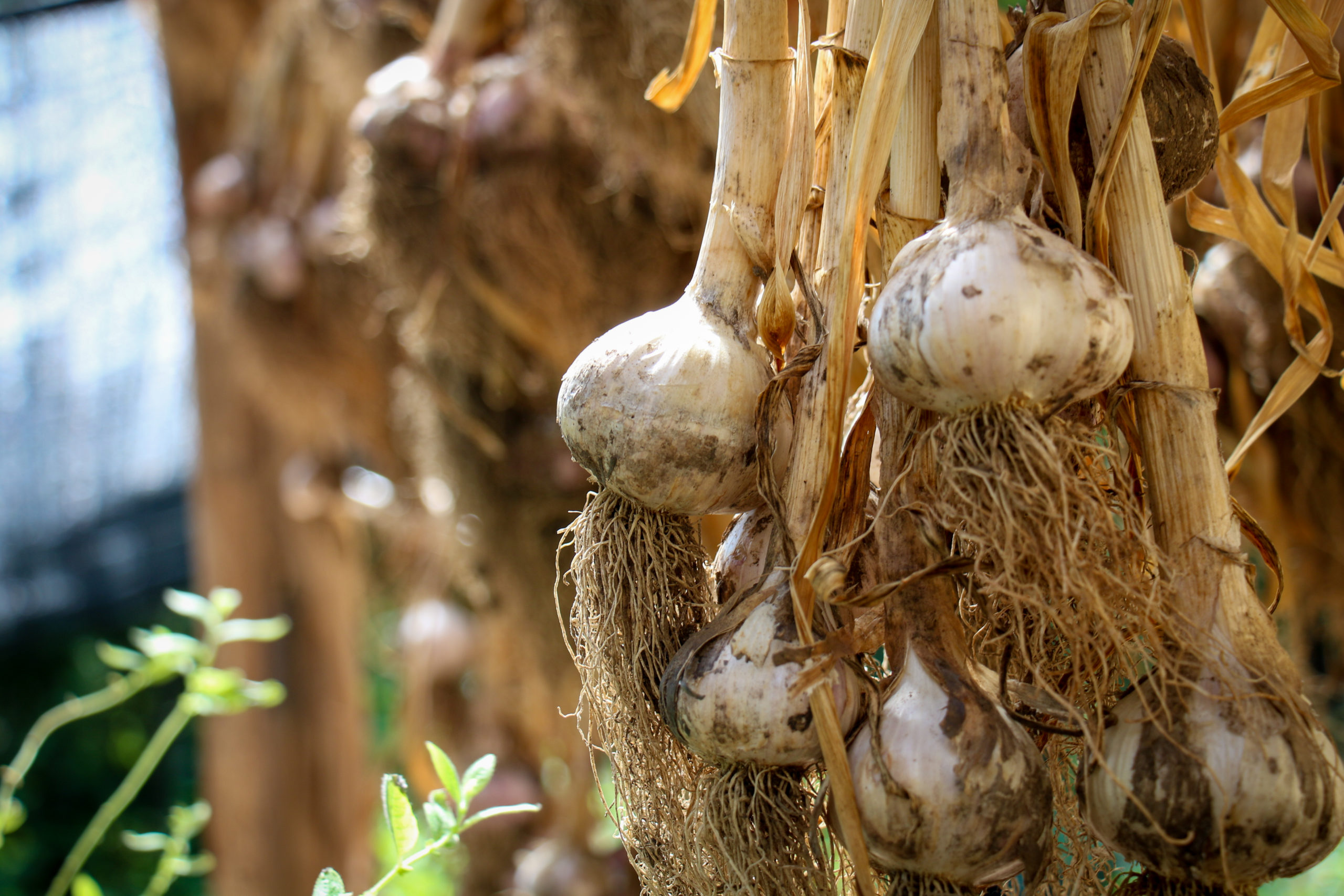(noun) An agricultural system or method that seeks to integrate human activity with natural surroundings so as to create highly efficient self-sustaining ecosystems
Up until around the year 2015, the site of the future Community Food Forest was a clear-cut where the previous owners had raised chickens and grazed sheep. The soils were compacted from vehicle traffic, the dominant cover was introduced grasses, and stumps and logging slash were scattered around. Two dilapidated chicken houses needed to be dismantled before preparation could begin on the food forest.
Despite the degradation of the land, the site was identified as a promising location for a food forest due to its soils, aspect, and landscape position near a water source.

Permaculture design experts Richard Walker and Javan Bernakevitch visited the Learning Centre in 2015 to lead a workshop to design and plant the Community Food Forest.
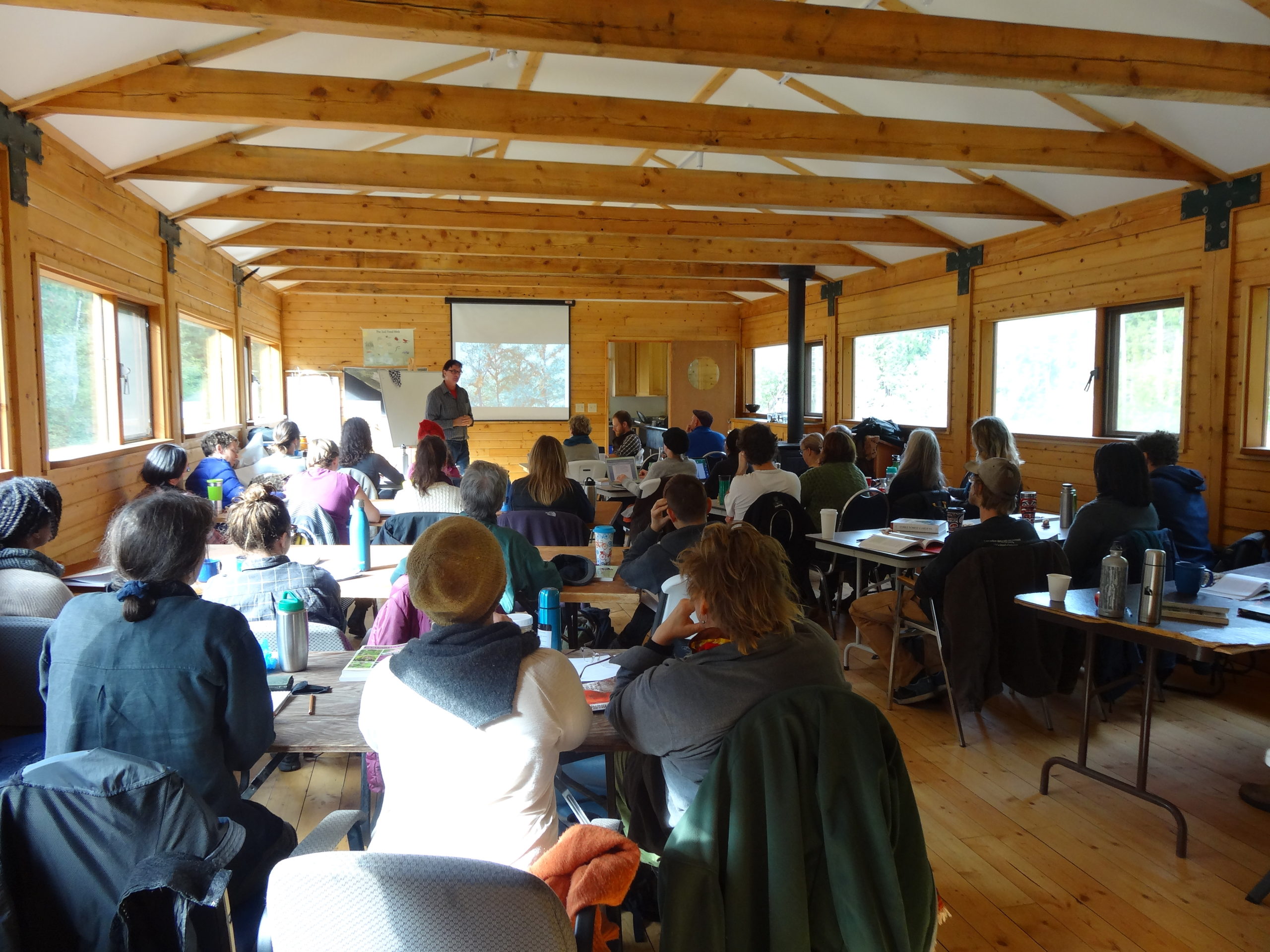
Forest Gardens can take many forms. The Conservancy decided to go with Hugelkultur beds to create our forest garden, making use of the coarse woody debris left on the site after logging. Hugelkultur beds are no-dig raised beds that rely on a gradual decay of wood as a consistent source of long-term nutrients for the plants. A large bed might give out a constant supply of nutrients for 20 years—or even longer if you use only hardwoods. The composting wood also generates heat which should extend the growing season. Soil aeration increases as those branches and logs break down, meaning the bed will be no-till for the long term. The logs and branches act like a sponge. Rainwater is stored and then released during drier times. Watering becomes less and less necessary once the plants are established.

Community members and workshop participants came together, under the guidance of Richard Walker and Javan Bernakevitch, to establish the first trees and shrubs on the hugelkultur beds late in 2015. Over 100 edible plants were established, and a large garlic crop was planted to provide a valuable harvest for the first growing season.

The trees and shrubs grew well during the first season, but had to be hand-watered through the dry summer months. By the end of the summer, a drip irrigation system had been installed. The first garlic crop was taken to market and sold quickly. A variety of edible species (including edible ‘weeds’ that came up naturally) were sold to local restaurants to help support the project.
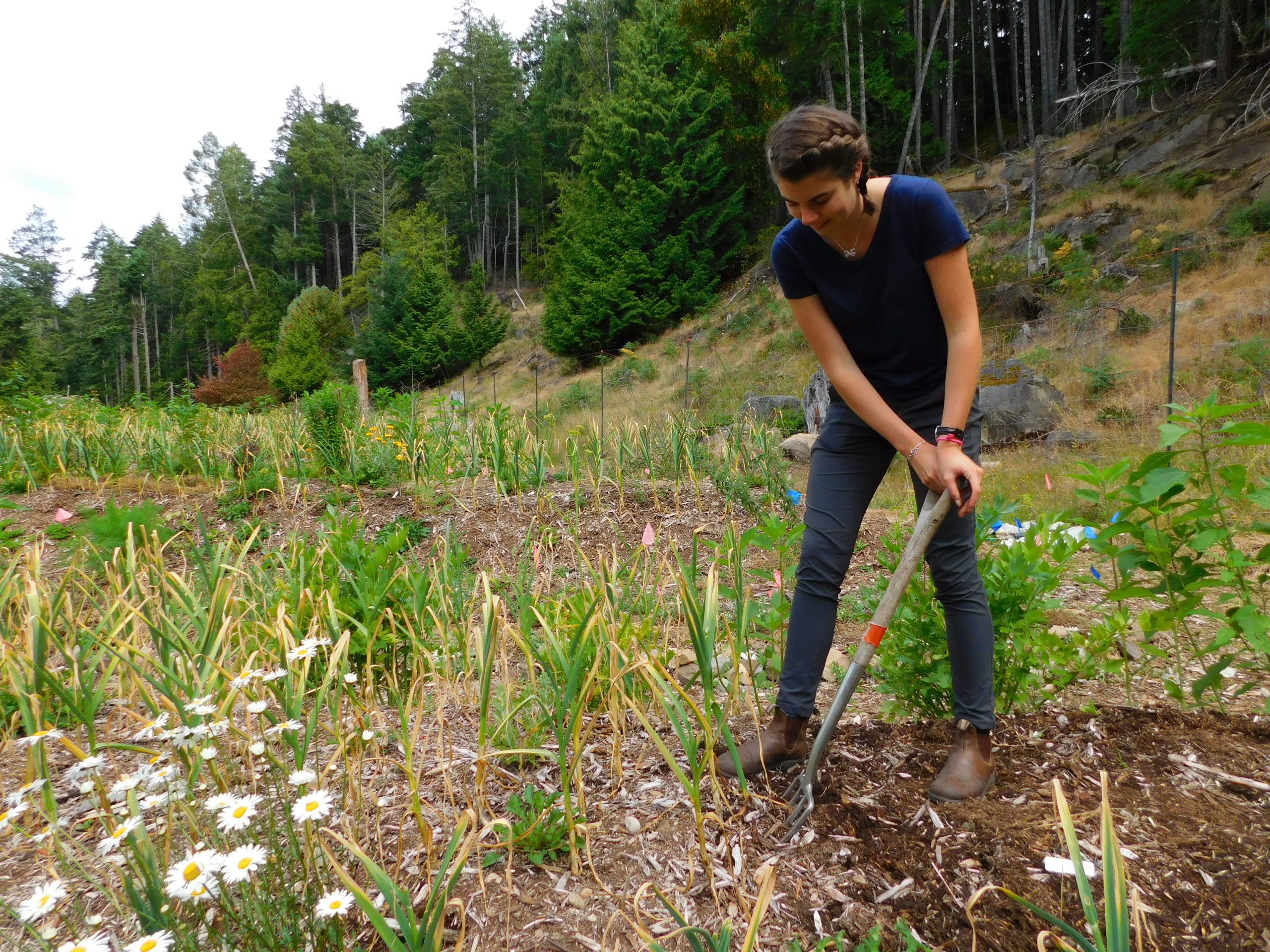
Over time, the trees and shrubs grew, and herbaceous species sprouted up all around them. New plants were added, and infrastructure improved. Volunteered established annual garden areas to produce more common vegetables. Eventually, the Galiano Conservancy’s plant nursery was moved to adjoin the Food Forest. Edible plants could now be propagated on site and planted back into the Food Forest, making it much more sustainable in the long-term.
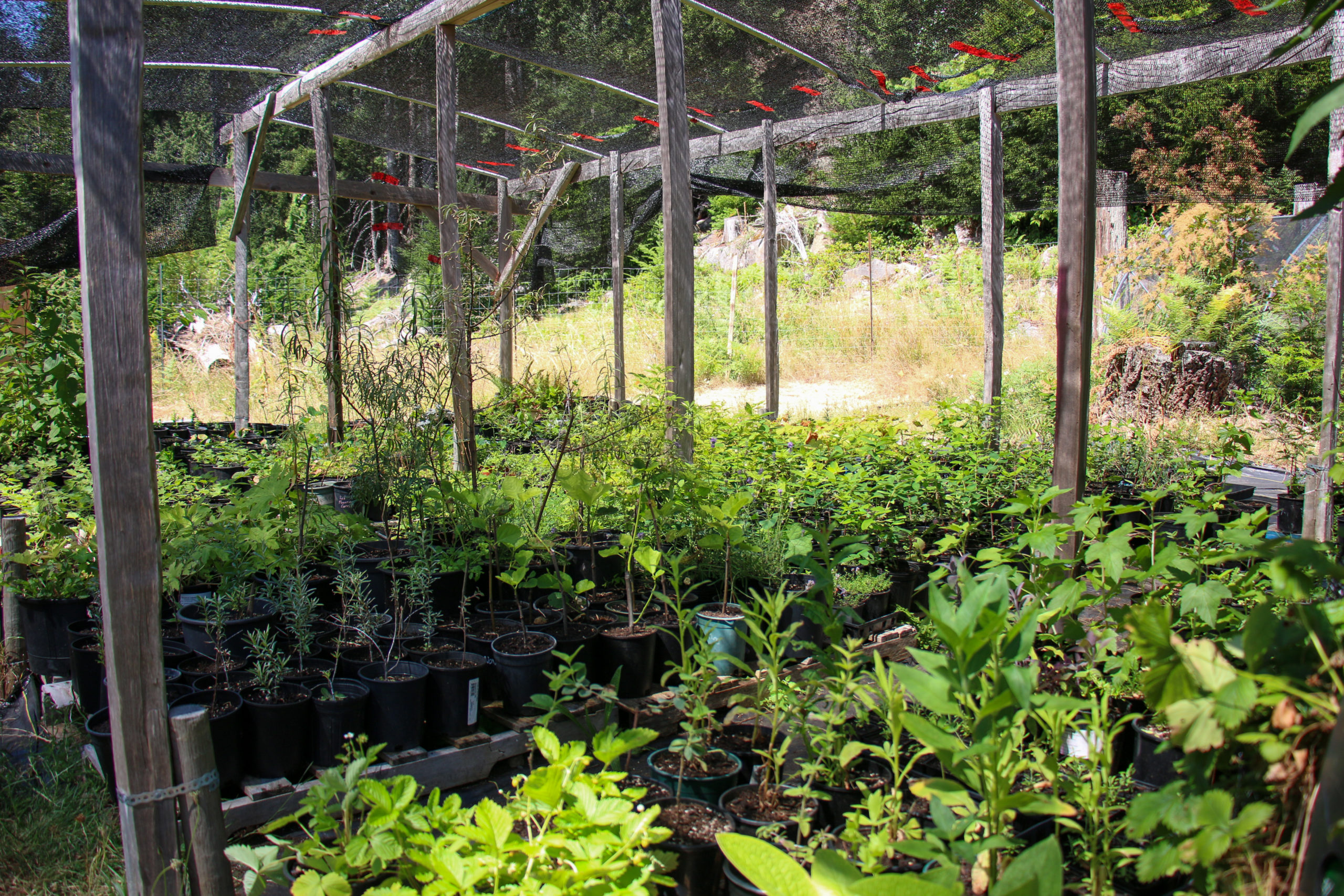
As plants came to maturity, a variety of crops could be harvested for sale and use in Forest Garden Tea products. Fruits, berries, greens, herbs, and roots are all grown and harvested for various purposes. Over 60 species are now produced and harvested in the Community Food Forest!
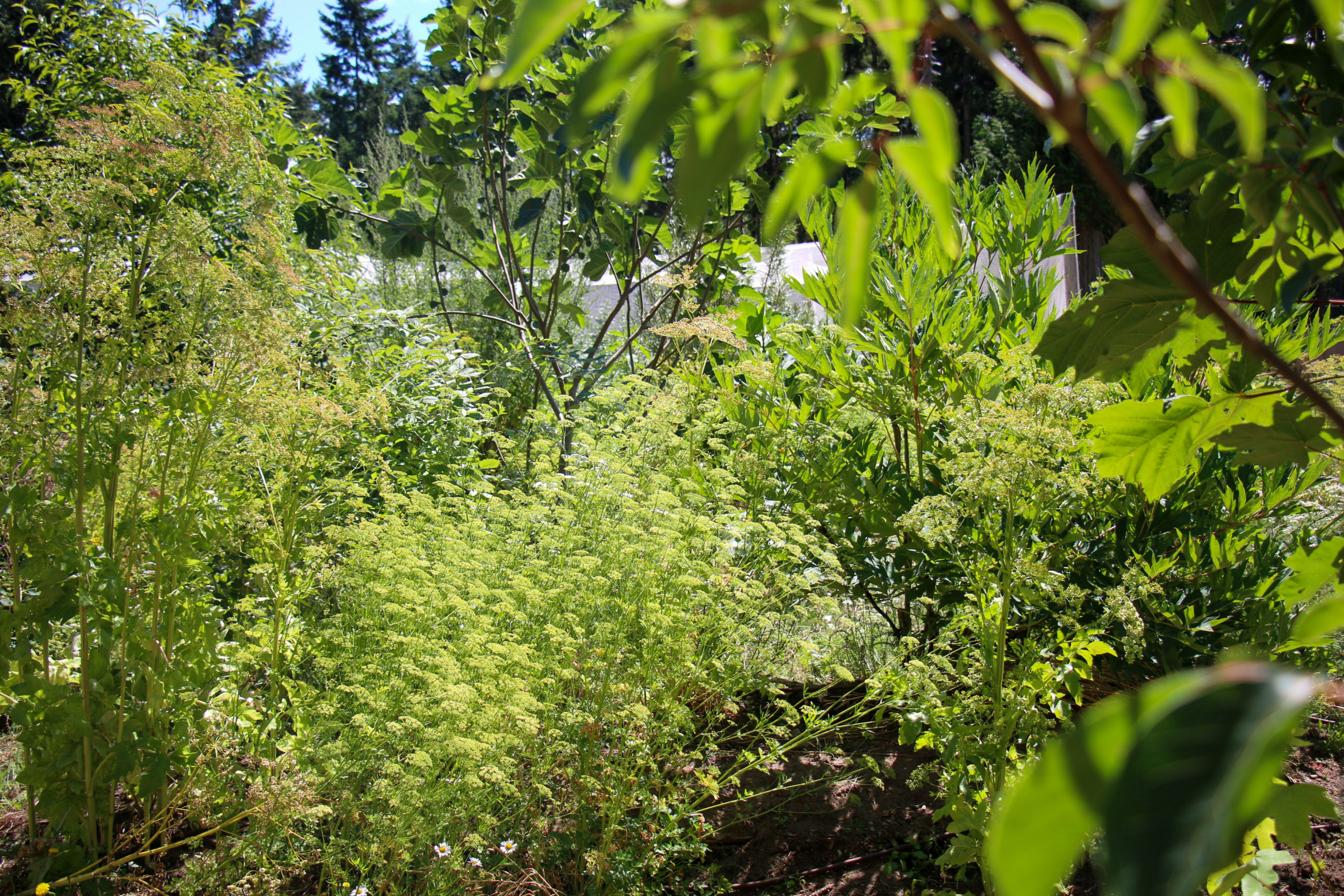
In addition to the nursery, a number of other infrastructure improvements have been made. A 50,000 litre ferrocement cistern was constructed over several months to capture rainwater and offset groundwater reliance. A greenhouse and cold frames were constructed to shelter young plants during the winter months. A Compost Hotspot was added, allowing staff and volunteers to produce worm casting and compost for the Food Forest.
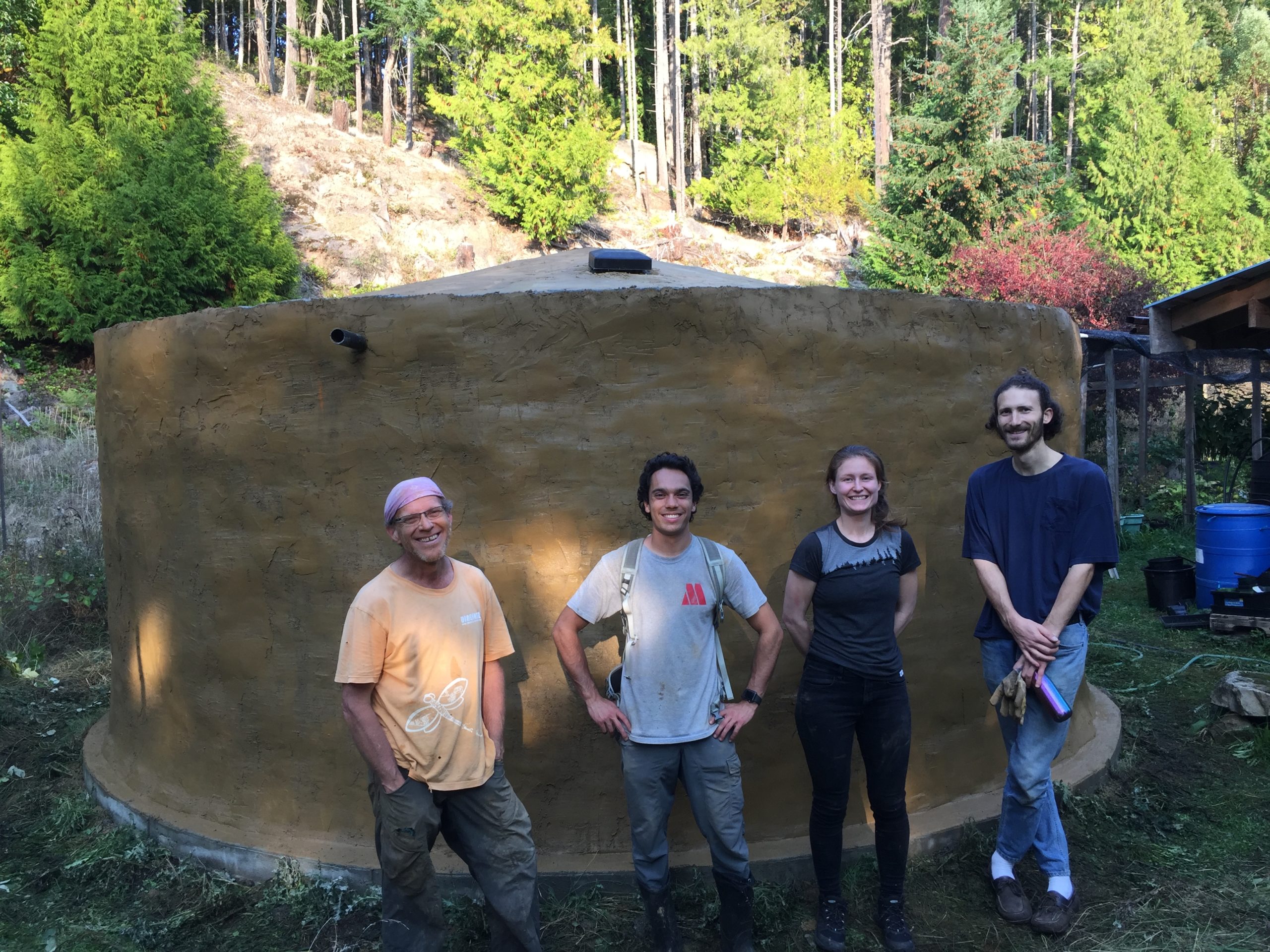
Ongoing care and monitoring are essential to understand how the Food Forest is evolving. But how to account for the health and impacts of such a unique project, with ecological, social, and artistic dimensions? In anticipation of this dilemma, University of Victoria post-graduate student Hyeone Park devoted her studies to developing a monitoring framework that could accommodate the unique features this project. Her masters thesis – entitled “A model of food forestry and its monitoring framework in the context of ecological restoration” – guides our monitoring work moving forward, and resulted in a published article in the journal Environmental Monitoring and Assessment.
Students and interns take part in executing the monitoring framework and collecting data on an annual basis. Our hope is to capture a snapshot of the broad range of ecological and social values created through innovative projects like the Community Food Forest.
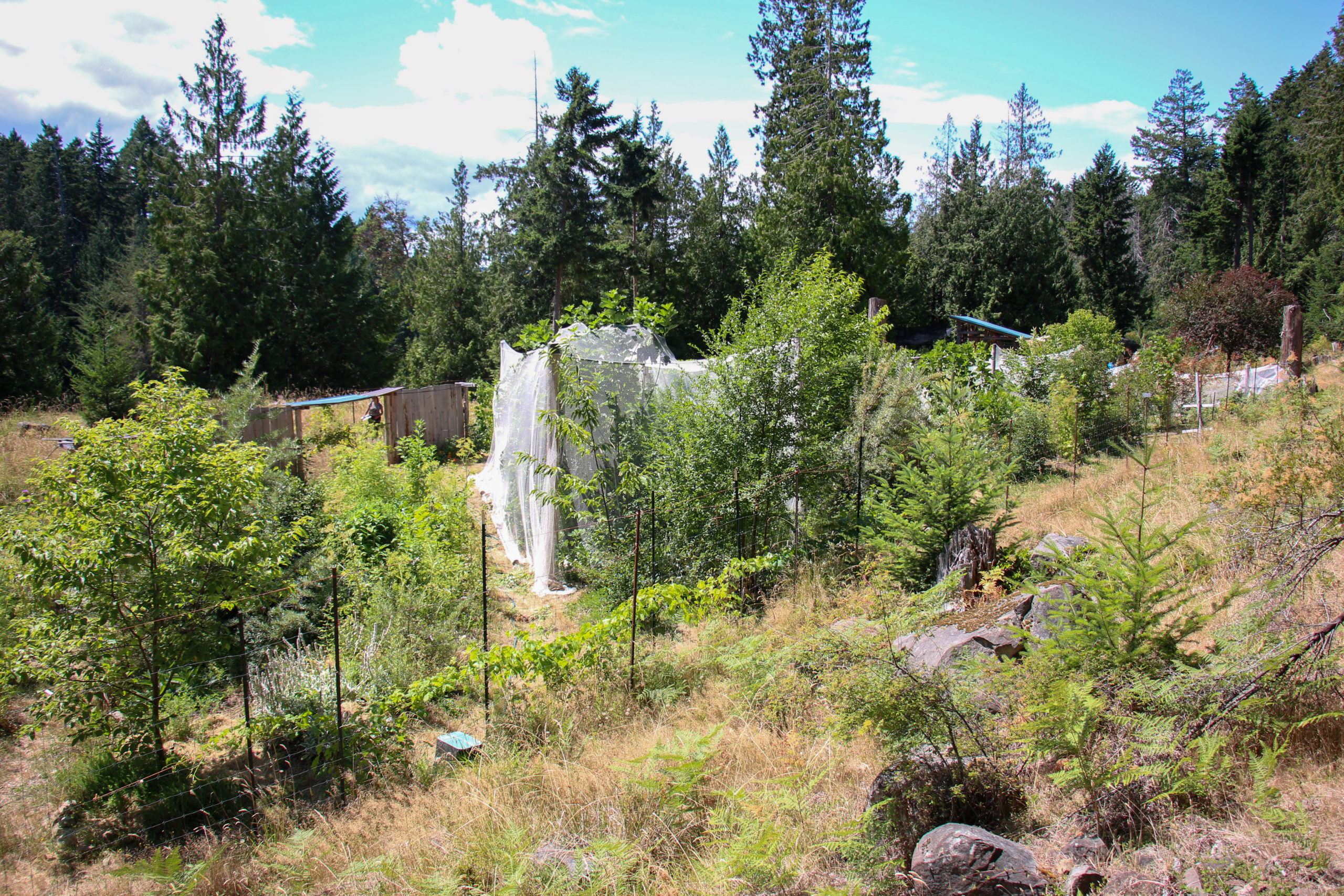
The Community Food Forest continues to grow and evolve. Every year, some of the plantings reach maturity and begin to produce fruit. New species show up and start to grow on their own.
Come visit the Food Forest, walk between the beds, and sample some of the seasonal foods. Consider volunteering with our Sustainable Food Systems Team, or taking some edible plants home from our nursery to establish in your garden.
